Roller Blinds
measuring guide
We are delighted to present our easy-to-follow instructions for measuring your windows to fit your new roller blinds.
You’ll be amazed at how fast and effortless the process is, so let’s get started!
Alright, let’s get down to business and start measuring. We’ll take it one step at a time.
Choose your mounting method
Outside the frame
Outside a frameless window
Inside the frame
Inside the frame
Measuring is a straightforward process that requires you to provide five essential details: the depth, width, drop, preferred chain side, and any minor obstructions. Here’s a step-by-step guide on how to carry out the measurement:
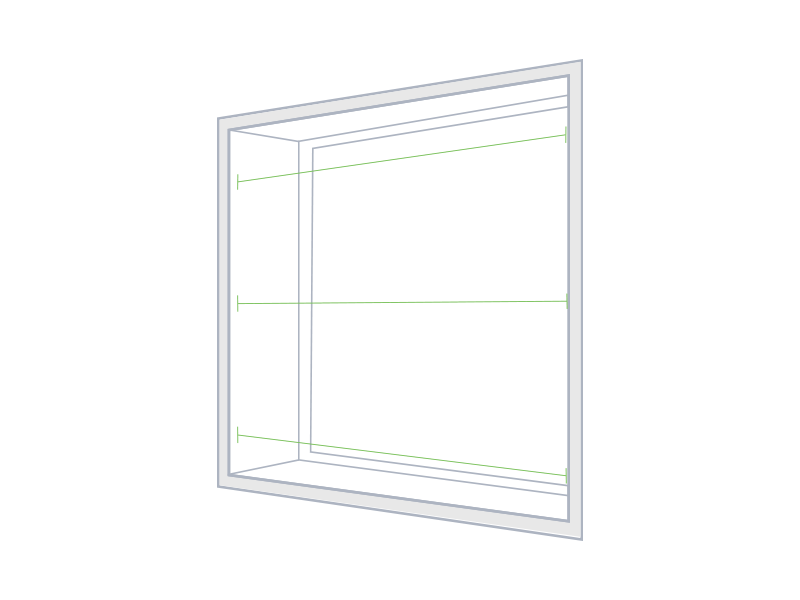
Measure the width
Obtain the precise interior width of the window frame at the top and record it. This measurement will serve as your bracket to bracket width. There is no need to subtract any values as we will handle the deductions for you to ensure a precise fit.
Measure the height
Measure the precise vertical height of the window frame from top to bottom on the inside, and make a note of it. When the blind is fully extended, it will align perfectly with the bottom of the frame.
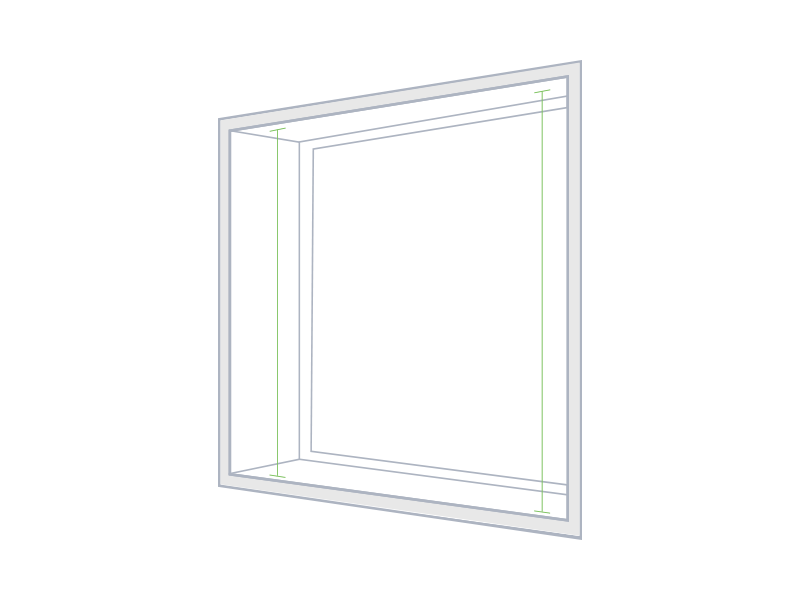

Measure the height
Measure the precise vertical height of the window frame from top to bottom on the inside, and make a note of it. When the blind is fully extended, it will align perfectly with the bottom of the frame.
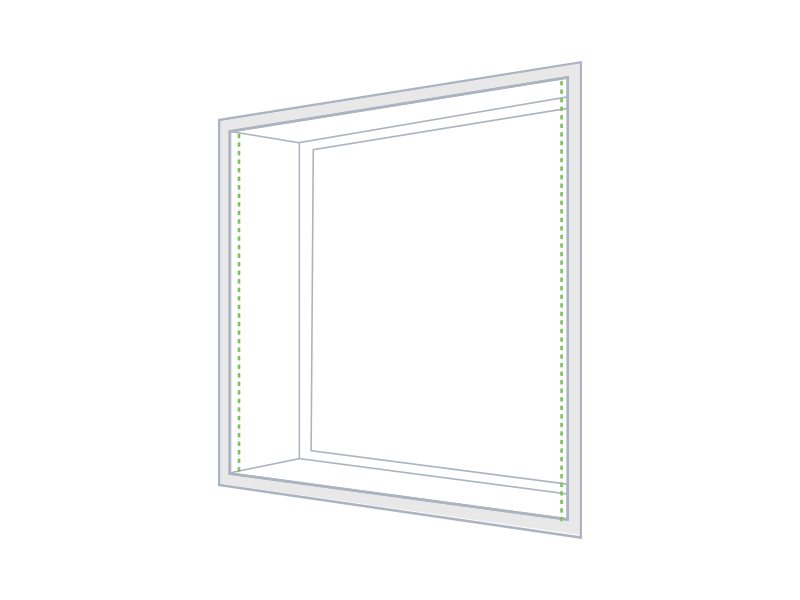
Choose your preferred chain side
Take note of the preferred location for your chain to be positioned. Consider factors such as convenience of access, absence of obstacles, and minimal visibility of the chain.
Measure the depth
Ensure that there is a minimum depth of 50 mm between the window glass and the window frame edge. This allowance is necessary to accommodate the roller blinds neatly within the frame.
Take note of any obstructions present, but keep in mind that they should be minimal. These notes will be included in your order.
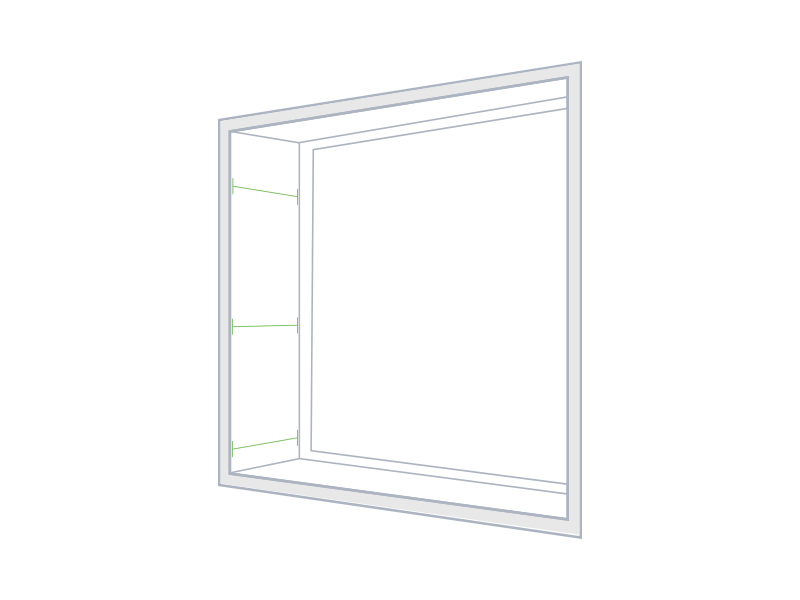

Measure the depth
Ensure that there is a minimum depth of 50 mm between the window glass and the window frame edge. This allowance is necessary to accommodate the roller blinds neatly within the frame.
Take note of any obstructions present, but keep in mind that they should be minimal. These notes will be included in your order.
Outside a frameless window
Taking measurements is a breeze; all we require are three details: the width, the drop measurements, and your preference for the chain’s placement. Let’s walk you through the process:
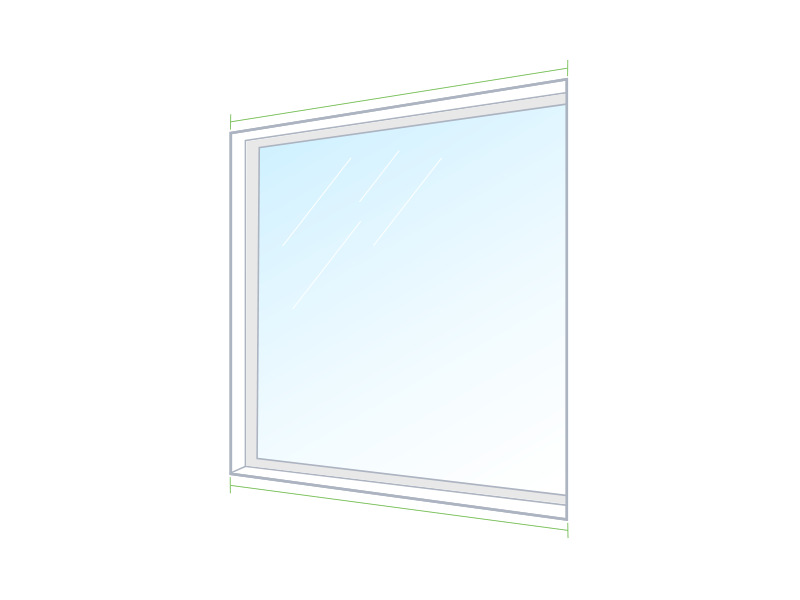
Measure the width
Take the precise width of the window’s exterior at the top and record it.
Next, increase the measurement by at least 70 mm to determine the overall width from bracket to bracket. This additional allowance ensures that the blinds effectively block any light leakage from the sides.
For instance, if your window width measures 1510 mm, you would add 70 mm to obtain a final value of 1580 mm.
Measure the height
Determine the vertical measurement of the window, starting from the top and ending at the desired position for the blind. This could be at the window’s bottom, slightly above the floor, or to align with other blinds in the room.
Additionally, include a minimum of 70 mm to the top and bottom measurements to prevent any light leakage.
For example, if the desired drop measurement is 1500 mm, you would add 70 mm to both the top and bottom, resulting in a final value of 1640 mm.
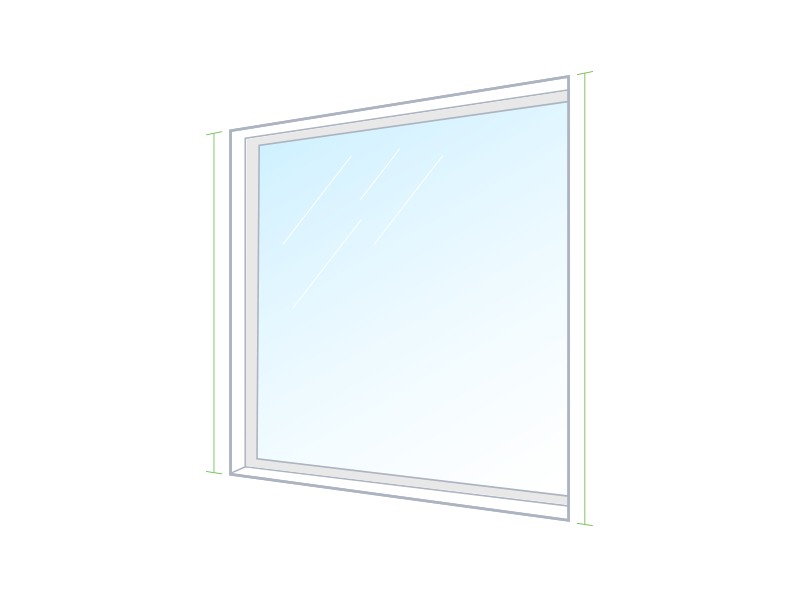

Measure the height
Determine the vertical measurement of the window, starting from the top and ending at the desired position for the blind. This could be at the window’s bottom, slightly above the floor, or to align with other blinds in the room.
Additionally, include a minimum of 70 mm to the top and bottom measurements to prevent any light leakage.
For example, if the desired drop measurement is 1500 mm, you would add 70 mm to both the top and bottom, resulting in a final value of 1640 mm.
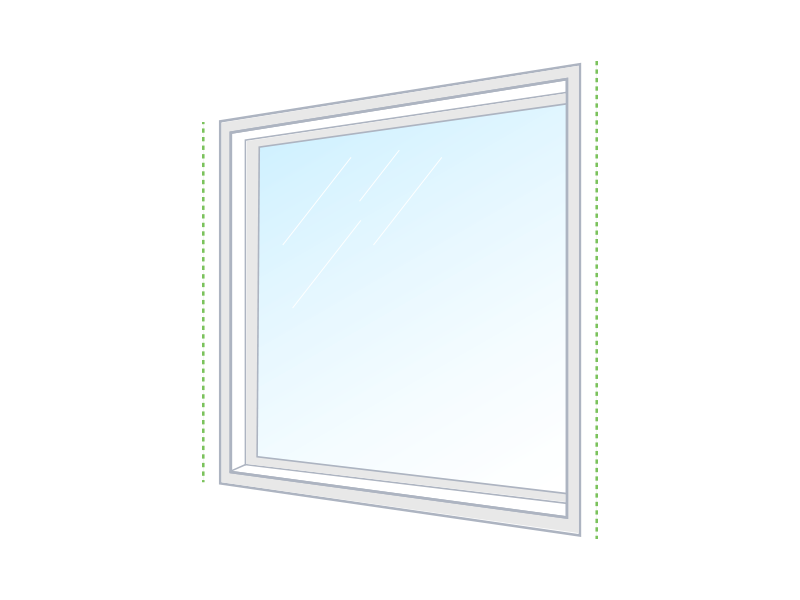
Choose your preferred chain side
Take note of the preferred location for your chain to be positioned. Consider factors such as convenience of access, absence of obstacles, and minimal visibility of the chain.
Outside the frame
Taking measurements is a breeze; all we require are three details: the width, the drop measurements, and your preference for the chain’s placement. Let’s walk you through the process:
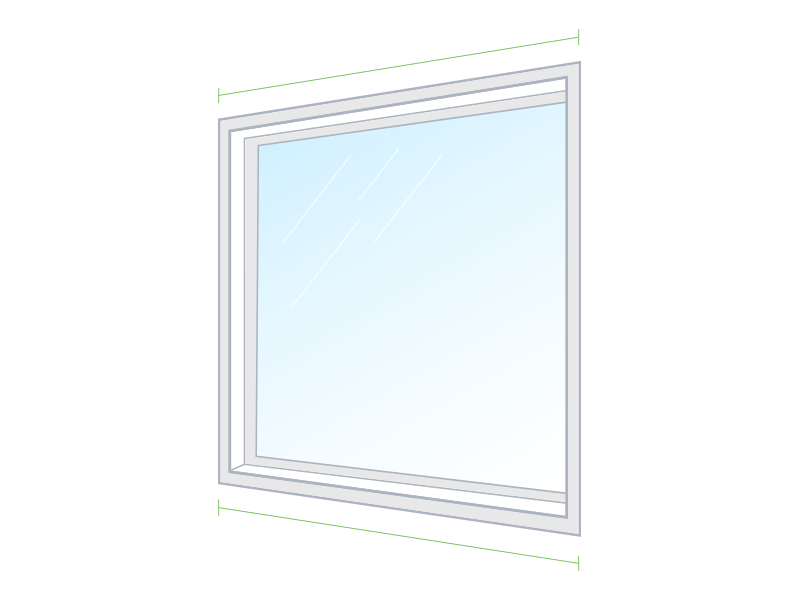
Measure the width
Determine the precise width of your window frame from one outer edge to the other along the top, and make a note of it. This measurement will serve as your bracket to bracket width.
Measure the height
Determine the vertical measurement of your window frame, starting from the top of the frame and ending at your desired point where the blind should stop. Take note of this measurement, which can be at the bottom of the frame, slightly above the floor, or aligned with other blinds in your room.
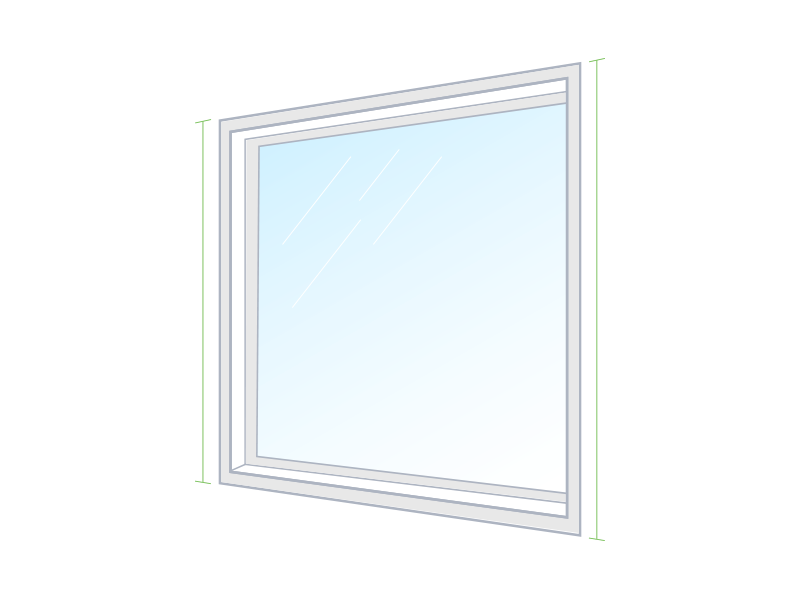

Measure the height
Determine the vertical measurement of your window frame, starting from the top of the frame and ending at your desired point where the blind should stop. Take note of this measurement, which can be at the bottom of the frame, slightly above the floor, or aligned with other blinds in your room.

Choose your preferred chain side
Determine the precise width of your window frame from one outer edge to the other along the top, and make a note of it. This measurement will serve as your bracket to bracket width.
Next Step
Now that you know how to take the measurements of your window, let’s move on to the installation process.

Installation guide
If you still have any questions, please give us a call or send us a message
Frequently Asked Questions
Roller Shutters
What are roller shutters?
Roller shutters are a type of window or door covering that consists of horizontal slats or panels hinged together. These slats are typically made of aluminium or steel, although other materials like PVC or wood may also be used. The shutters are mounted above the window or door opening and can be manually or motor-operated.
What are the advantages of roller shutters?
Overall, roller shutters offer a range of advantages for your home, including enhanced security, privacy, light and noise control, energy efficiency, weather protection, and ease of maintenance. They can be a valuable addition to any property, providing numerous benefits to you and your loved ones.
Can roller shutters make a room completely dark?
Roller shutters can significantly reduce the amount of light entering a room. Keep in mind that the darkness level will depend on various factors like the material and design of the shutters, the installation method, and if there are any gaps or light leaks around the edges.
Are roller shutters secure?
Nowadays roller shutters are considered one of the most secure options for windows and door coverings. That’s because of the extra layer of protection that makes it more difficult for intruders to gain access to your home or commercial property.
However, to keep your home safe with roller shutters, we always suggest ensuring proper installation, regular maintenance, and use of other security measures in combination with security roller shutters, such as alarms, motion sensors, and reinforced entry points, to enhance the overall security of your property.
Do roller shutters provide insulation for your home?
Yes, roller shutters can provide insulation for your home and contribute to energy efficiency as they act as an additional insulating layer on windows and doors. In fact, in colder seasons, roller shutters can help retain heat inside the house, while in hot weather, they can block out heat from entering.
By investing in high-quality roller shutters from shutters4u, you can boost their insulation properties and enjoy the benefits of improved energy efficiency and indoor comfort.
How to clean roller shutters at home?
Cleaning roller shutters at home is an easy process. All you need to do is to wash them with soft soap and scrub them with a sponge or microfibre cloth. Before that, ensure the shutters are closed to clean their interior and exterior. Also, first, remove any debris or dust from their surface.
Remember, regular cleaning and maintenance of roller shutters will help keep them in good condition and prolong their lifespan.
Where can be roller shutters installed?
The versatility and customizable nature of roller shutters make them suitable for various applications, and they can be tailored to fit your specific needs and requirements. Just to mention some examples, roller shutters are usually installed in windows, doors, shopfronts, warehouses, industrial buildings and more.
What roller shutter colours are available in shutters4u?
We have a brilliant colour palette available for shutters in Australia, starting from the classics to the ones that deck up pretty well with your space. Our team also offers customization in terms of colours and brings different combinations for your home or business space. You name it, and we provide it.
If you need ideas for what colours will match your home then give us a call, and we will be happy to suggest the best colour options for you.
How to install DIY roller shutters?
Installation instructions for your DIY roller shutters are available in a detailed step-by-step video as soon as your order is placed. In your order, you will receive a link to a set of videos with instructions on how to install your shutters.
We have a separate video for motorised and manual roller shutter installation, so no matter what you choose you have everything you need to be able to install the shutters yourself with no issues.
Still not sure if DIY Roller Shutters are for you?
We got you covered! We can suggest a group of experienced roller shutter installers who can complete the job for you, ensuring a high-quality finish at great prices. They offer roller shutters in Adelaide, roller shutters in Perth, roller shutters in Sydney, roller shutters in Brisbane and more.
Roller Blinds
What are roller blinds?
Roller blinds are a type of window covering made from a single piece of fabric or other flexible material that can be rolled up or down to cover or uncover a window. They are commonly used in residential and commercial spaces to control the amount of light entering a room and provide privacy.
Roller blinds are known for their simplicity, functionality, and versatility.
They are easy to install and operate, making them a popular choice for window coverings in homes, offices, and other spaces. They provide a clean and streamlined look when fully rolled up and can be adjusted to different positions to allow for varying levels of light and privacy.
What are dual roller blinds?
Double roller blinds are popular for their versatility, offering a practical and stylish solution for controlling light and privacy in residential and commercial spaces. They are a type of window covering that combines two different types of fabrics on a single roller system. They offer the ability to switch between two different levels of light control and privacy, providing versatile functionality and aesthetic options.
What are the benefits of DIY roller blinds?
One of the primary advantages of DIY roller blinds is the potential for cost savings, you can avoid paying for professional installation or custom-made blinds, which can be more expensive. Additionally, they allow you to have full control over the design and customization according to your specific window measurements.
Moreover, an additional benefit of DIY roller blinds is that they are easy to keep clean and maintain.
Fabric options for roller blinds
Depending on the needs you have for each room, there are different fabric options for roller blinds DIY:
- Polyester
- PVC
- Vinyl
Operating system options for roller blinds?
Roller blinds can be operated using various systems, depending on your preferences and requirements. Here are some common operating systems for DIY roller blinds for windows:
- Manual Chain or Cord: This is the most traditional operating system for roller blinds. It involves a chain or cord attached to the blind that allows you to pull up or down the blind to your desired position.
- Spring-Loaded Mechanism: Spring-loaded roller blinds utilize a spring mechanism within the roller tube. These blinds can be easily operated by gently pulling down on the bottom of the blind to lower it and releasing it to allow the spring to retract and raise the blind. This system does not require chains or cords, providing a clean and elegant look.
- Automated: Motorised roller blinds have a motor that allows you to control the blinds using a remote control, wall switch, or even a smartphone app. Motorized blinds are particularly beneficial for hard-to-reach windows or for individuals with mobility issues.
- Smart Home Integration: Some roller blinds can be integrated into smart home systems, such as Amazon Alexa, Google Home, or Apple HomeKit. This allows you to control the blinds using voice commands or through smartphone apps.
Do roller blinds provide insulation for your home?
Roller blinds can provide some level of insulation for your home, depending on the type of fabric or material used. In fact, roller blinds can contribute to energy efficiency and temperature control. During hot weather, using roller blinds with light-coloured or reflective fabrics can help reflect sunlight and reduce solar heat gain, keeping your space cooler. In colder months, using roller blinds made from thicker or insulating materials can help prevent heat loss and improve thermal efficiency.
How to clean roller blinds?
It is important to clean and maintain the roller blinds regularly to ensure they will last for longer.
In this case, there are two easy ways to clean internal roller blinds, either by wiping them down with a damp, soft cloth or vacuuming them.
Where can Roller blinds be installed?
DIY roller blinds can be installed in any residential and commercial space where you have good ventilation. Roller blinds offer a versatile and space-saving solution for controlling light, privacy, and temperature in any room.
However, It's important to consider the specific requirements of the installation location, such as the size of the windows or doors, the mounting options available, and any special considerations for the type of blind chosen.
How to install roller blinds?
Installation instructions for your DIY roller blinds are available in a detailed step-by-step video as soon as your order is placed. In your order, you will receive a link to a set of videos with instructions on how to install your shutters.
We have a separate video for motorised and manual roller blinds installation, so no matter what you choose you have everything you need to be able to install the shutters yourself with no issues.
Still not sure if DIY Roller Blinds are for you?
We got you covered! We can suggest a group of experienced roller blind installers who can complete the job for you, ensuring a high-quality finish at great prices. They offer roller blinds in Adelaide and roller blinds in Perth.
